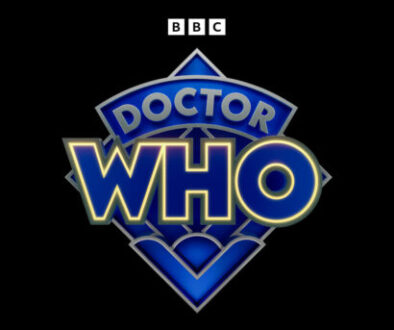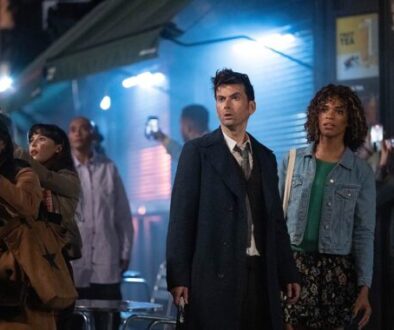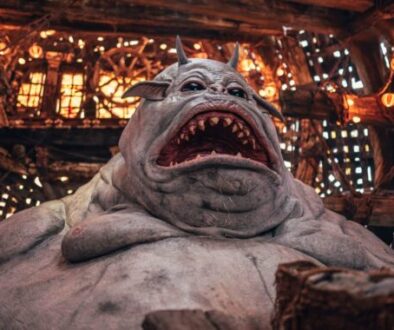Doctor Who – “Wild Blue Yonder” Review – Ship-in-a-Bottle Episode
Clint Hassell gives his SPOILER-filled commentary on the second 60th anniversary special.

Note: this review contains full SPOILERS for the second 60th anniversary special.
Produced with limited sets and almost no location shooting or additional cast, “Wild Blue Yonder” is an example of what filmmakers call a “bottle episode.” This is not the first time that Doctor Who has utilized the bottle episode format to overcome production issues. Season One’s third serial, The Edge of Destruction, was filmed entirely on the existing TARDIS interior set, using only the main cast, after the series’ first two serials ran overbudget. Aside from opening and closing scenes which bookend the episode, Series Four’s “Midnight” is set inside a shuttle craft and features a small cast in order to help production make up for the sprawling scope of “Turn Left.”
Ostensibly written to maximize the number of episodes that could be filmed during the time that lead actors David Tennant and Catherine Tate were both available, “Wild Blue Yonder” features a simple plot that allows for a deeper exploration of the series’ lead characters than “The Star Beast.” Note the dynamic range of emotion covered in the initial scene of the episode’s first act. After he displays confidence and ingenuity, the Doctor and his companion grapple with the weight of being abandoned by the escaping TARDIS. The two blame each other and tempers boil over, before the pair focus on the situation at hand. Donna realizes how isolated she is and panics. She is comforted by the Doctor, who again displays confidence, before Donna resolves to overcome whatever threat activated the TARDIS’ HADS protocol. The scene is delicious and a delight for actors of Tennant and Tate’s caliber.
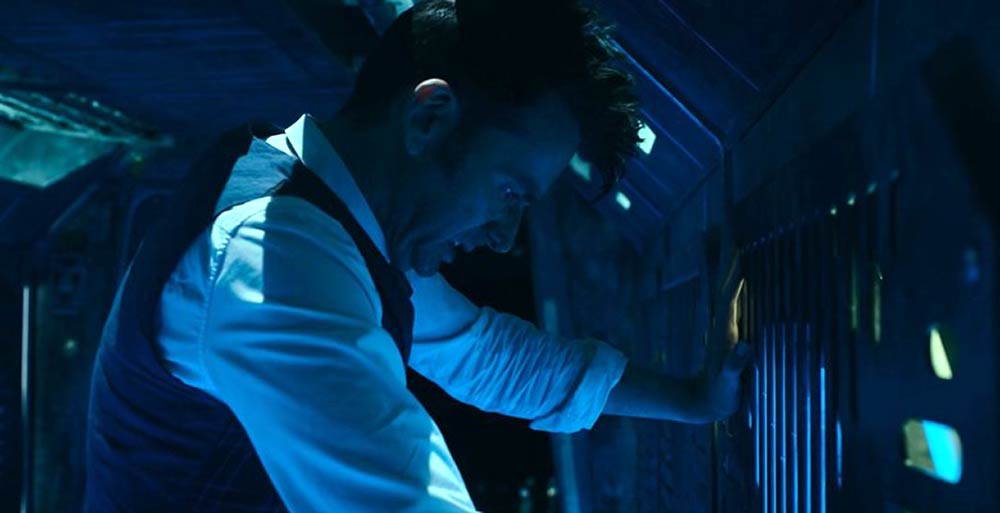
Where “Wild Blue Yonder” really shines is in showrunner Russell T Davies’ script, which is layered with subtle references to the episode’s theme of dichotomy. Compare the scene where Donna imagines what Shaun, Rose, and Wilf will do if she never returns to London with a parallel scene where the Doctor proffers a future for the abandoned TARDIS. The scope of the Doctor’s envisioned future is boundless compared to Donna’s—an idea that is immediately contrasted by two villainous characters who find the very concept of shape to be limiting. It is to Tennant and Tate’s credit that it is immediately evident that these additional characters are not the Doctor and Donna, and that later scenes can play with the are-they-or-aren’t-they dynamic, as the not-things learn to replicate more accurately the two.
The same parallel dialogue device is repeated later in the episode as the Doctor and Donna, again separated, must deduce if the other is real or not-thing—the dyads characterize the Doctor as “knowing everything” and “making it all up.” This dichotomy is also central to the episode’s third act, as the Doctor identifies Donna as believing she is both stupid and brilliant, “two completely different things at the same time.” This episode celebrates Donna’s humanity without resorting to merely placing her at odds with the narrative’s on-a-spaceship-at-the-edge-of-the-Universe setting and serves as impetus for Donna’s preternatural observance in the next scene, when she asks why the not-things are trying to scare the pair rather than passively copying them.

Cleverly, Davies’ even laces the special’s title with his theme of dichotomy. “Wild blue yonder” is a phrase from “The U.S. Air Force,” a song described by the Doctor and Wilf as a “war song” and by Donna’s music teacher, Mrs. Bean, as “jolly.” This final piece of the episode’s puzzle plays into the narrative, with Donna’s story being pivotal in the finale.
A final thought: the special’s teaser seems out-of-place, other than to provide much-needed levity in the episode. The scene does set up what may be an ongoing subplot when the Doctor and Donna’s presence causes the notion of “gravity” to be reconceived as “mavity.” Doctor Who has never before played with the concept of time being rewritten in such a way, with concepts like Reapers and “fixed points” in time ensuring that the Doctor’s presence does not alter too drastically the course of human history. It is especially notable that the Doctor himself seems to be affected by the anomaly, when he so clearly remembered the existence of Rory Williams after Amy Pond’s boyfriend was erased from time. Is this plot point merely a running joke for this episode or the cause of the end of the world teased at the special’s end? Or, is Russell T Davies setting up a longer storyline in which the Doctor is forced to reconcile how meddling with the time stream he himself inhabits can have dangerous consequences?
Random Musings
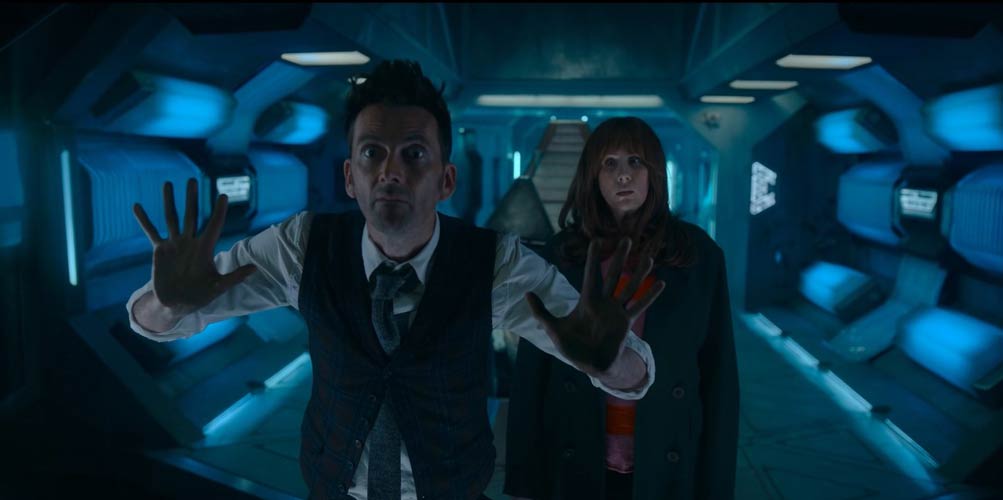
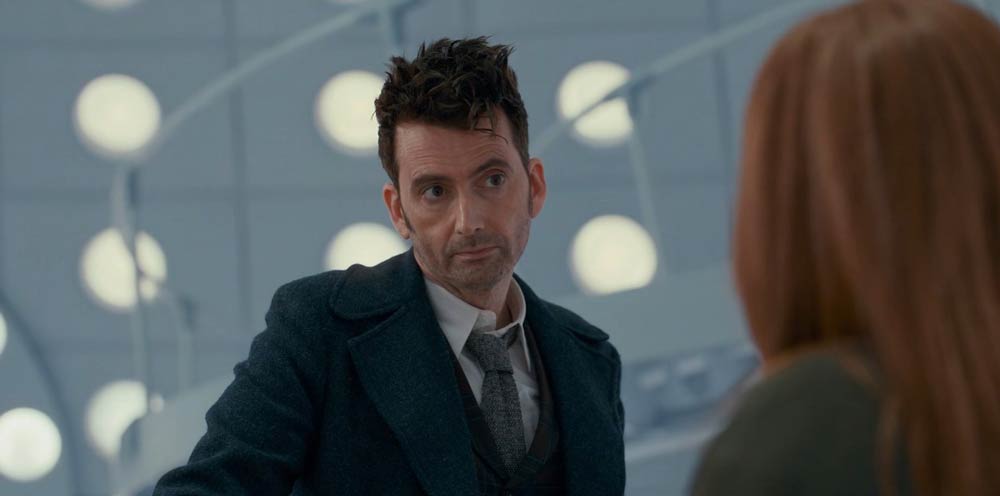
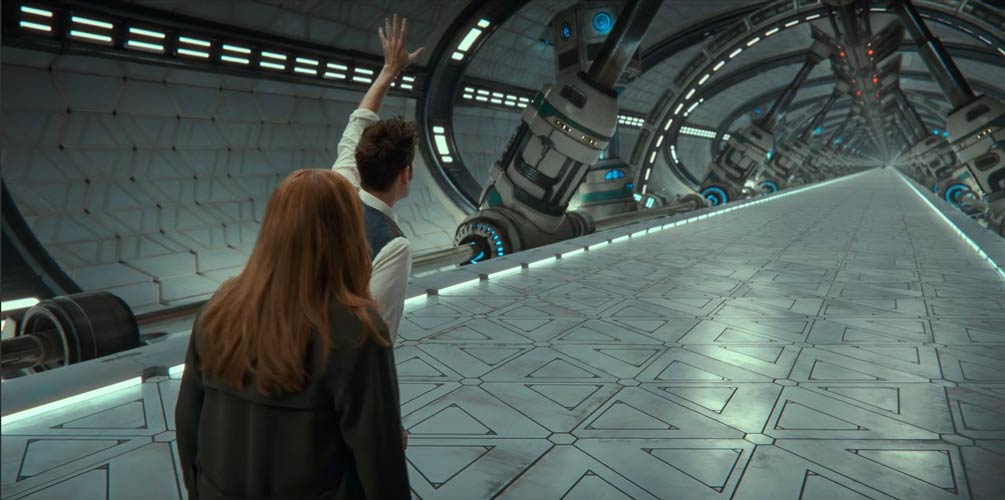
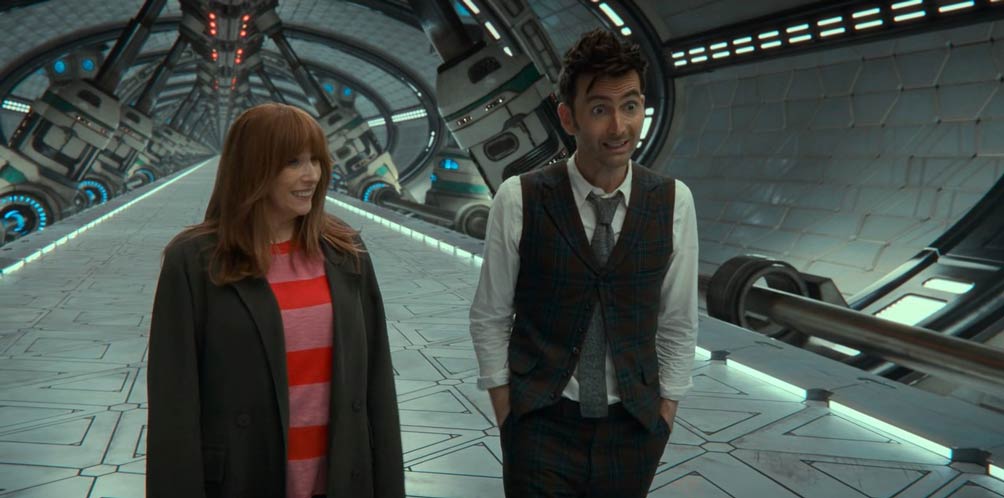
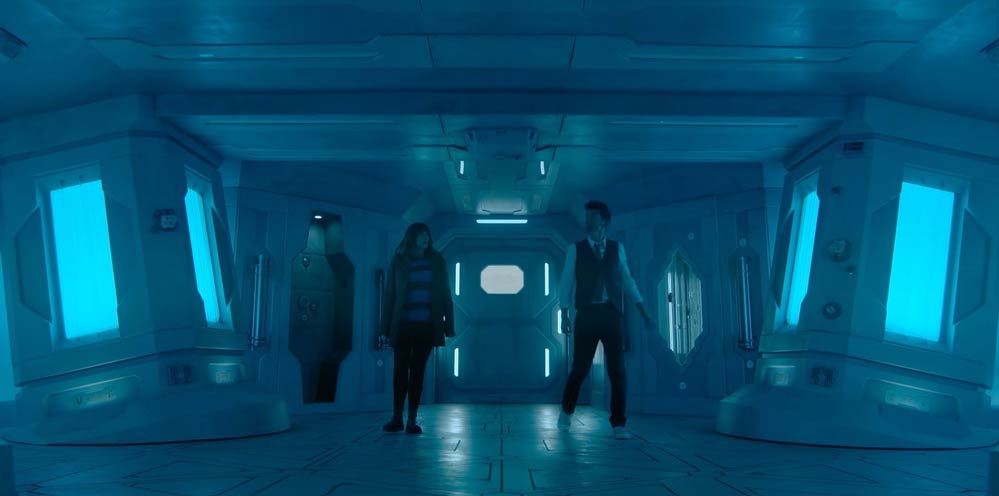
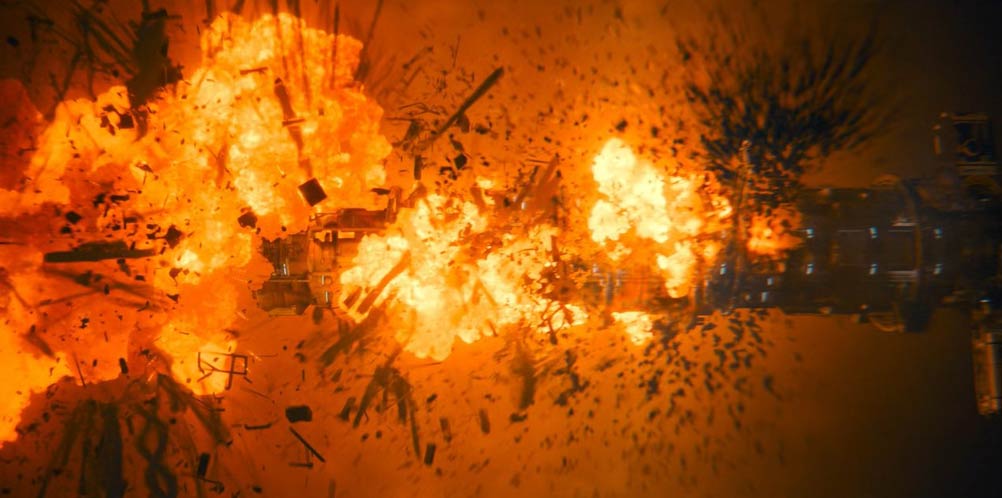
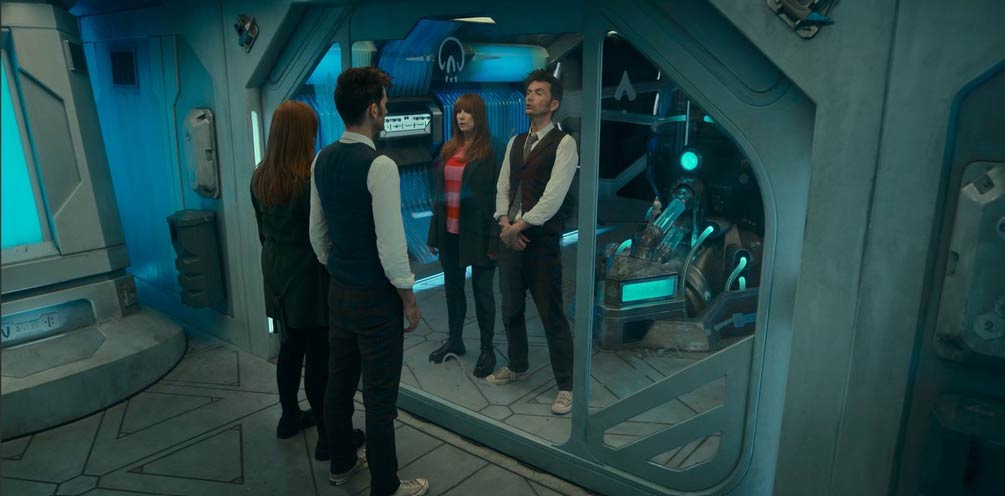



(Time) Capsule Review
Revisiting traits from successor Steven Moffat’s tenure as showrunner, Russell T Davies’ script for “Wild Blue Yonder” emphasizes a theme of dichotomy that celebrates companion Donna Noble’s humanity. The bottle episode’s plot is simple, allowing the cast ample time to deeply mine the emotional states of their characters.
If you’d like to interact with the author of this article, follow him on Twitter @ClintHassell.




